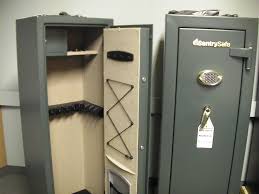The Evolution of Vault Doors: From Ancient Fortresses to Modern Security
Vault doors have come a long way in their evolution, adapting to the changing needs of society and advancements in technology. From the primitive fortresses of the past to the sophisticated security systems of today, this article explores the fascinating journey of vault doors and their role in safeguarding valuable assets.

The Ancient Fortresses: Where It All Began
In ancient times, the need for secure storage led to the development of fortified structures. These early vaults were constructed using heavy materials such as stone and were equipped with massive doors that served as the first line of defense. The focus was on strength and durability, with intricate mechanisms and intricate locks that deterred unauthorized access.
Medieval Advancements: From Castles to Codes
During the medieval period, vault doors became more refined as the art of locksmithing advanced. Castles and fortresses featured sophisticated locking systems, incorporating intricate key designs and complex mechanisms. The combination of mechanical ingenuity and strategic placement ensured that vault doors were practically impenetrable.
The Industrial Revolution: A Shift in Design
With the advent of the Industrial Revolution, the demand for secure storage increased exponentially. This led to a shift in the design and manufacturing of vault doors. Steel, a strong and versatile material, replaced stone as the primary construction material. The advancements in metallurgy and engineering allowed for the creation of vault doors that were both robust and aesthetically pleasing.
Modern Innovations: Technology Meets Security
In the modern era, technology has revolutionized the security industry, and vault doors have not been left behind. Electronic systems, biometric authentication, and cutting-edge encryption techniques have transformed vault doors into highly sophisticated security devices. These advancements have made it possible to protect assets with unprecedented levels of security and convenience.
Reinventing the Vault Door: Key Features and Technologies
1. Biometric Authentication
Many modern vault doors utilize biometric authentication, such as fingerprint or iris scanning, to ensure only authorized individuals can gain access. This advanced technology provides an extra layer of security, as biometric data is unique to each individual and virtually impossible to replicate.
2. Multiple Layered Security
Vault doors today often incorporate multiple layers of security to prevent unauthorized access. This includes reinforced steel construction, advanced locking mechanisms, and intrusion detection systems. These layers work in harmony to provide a formidable barrier against any potential threats.
3. Remote Monitoring and Control
The integration of internet connectivity and smart technology enables remote monitoring and control of vault doors. This means that authorized personnel can manage access, monitor security systems, and receive real-time alerts from anywhere in the world. Such capabilities enhance convenience and ensure rapid response to any security breaches.
Conclusion
The evolution of vault doors reflects humanity’s constant pursuit of security and protection. From the primitive fortresses of ancient times to the technologically advanced security systems of today, vault doors have continually adapted to meet the changing needs of society. As technology continues to advance, we can expect further innovations in vault door design, ensuring the safety of our most valuable assets for generations to come.
